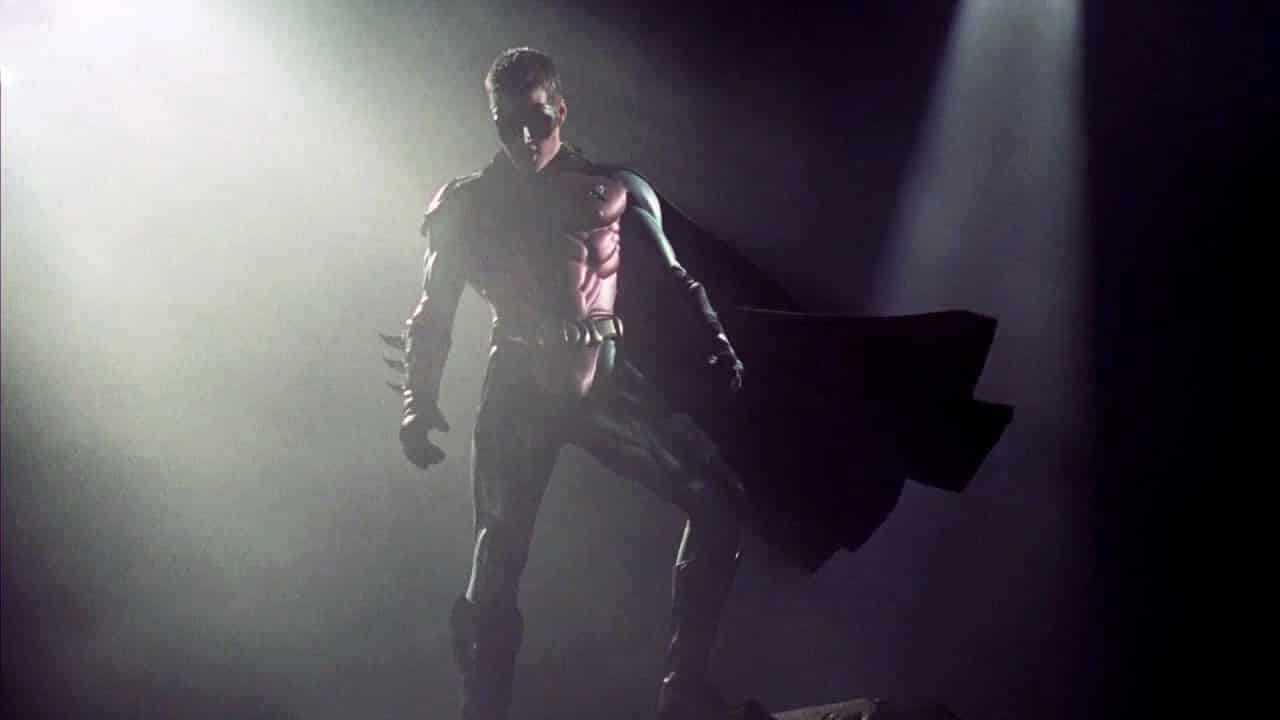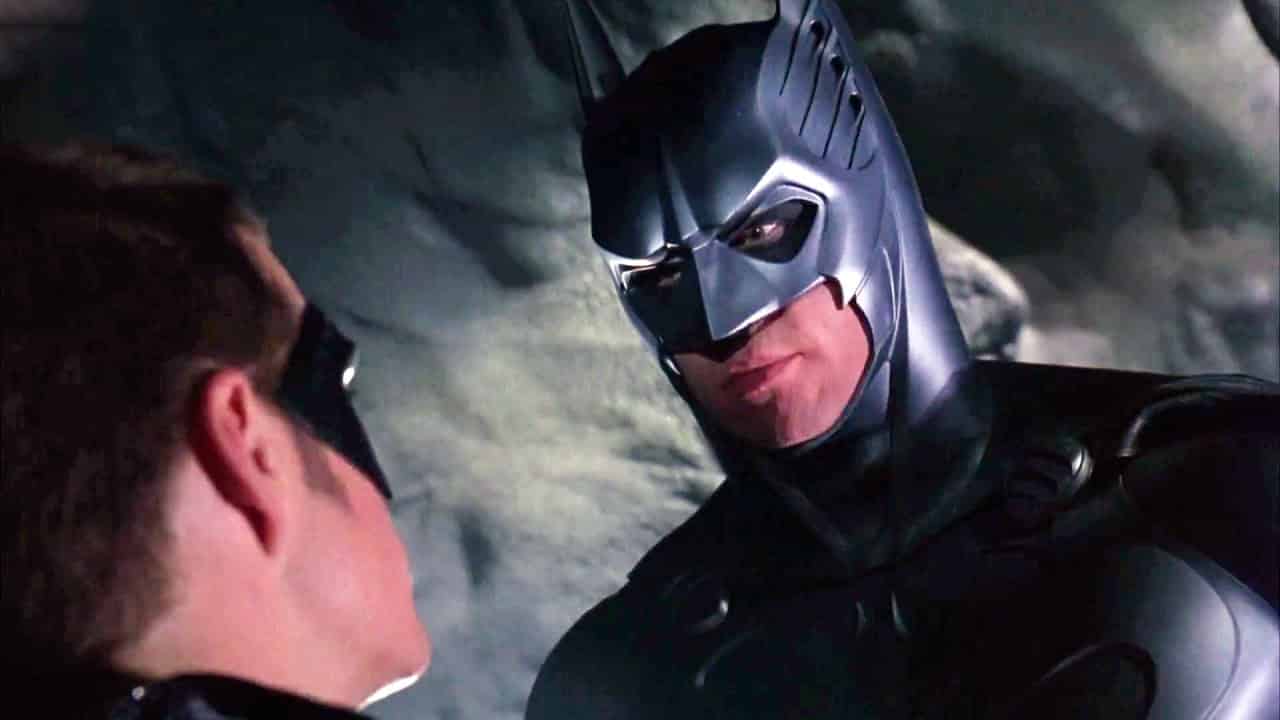Rumors swirled this week around the possible existence of a 170-minute cut of Batman Forever. This would be a full 40 minutes longer than the version that was released in cinemas in June 1995.
This is not a surprise. Fans have long been aware of alternate versions of Batman Forever. Home media releases have included deleted scenes (and even entire deleted subplots) that hint at a much different film than the one that appeared in cinemas. There have been fan edits attempting to redeem the film, while director Joel Schumacher often claimed that he had wanted to adapt Frank Miller’s grim and gritty epic, The Dark Knight Returns.
Of course, fans should be careful about getting their hopes up. Schumacher was a complicated and capable director who made several great and iconic films and deserves more than to be defined by his two deeply flawed Batman films. However, the director was always graceful in accepting criticism for Batman Forever and Batman & Robin, often shielding the rest of the cast and crew from blame while insisting that he “was a big boy” who was mature enough to take responsibility for his choices.
Schumacher consistently rejected the idea that he was the victim of executive meddling during the production and post-production of his two films. When it was suggested that he “never got to make (his) Batman movie,” Schumacher dismissed the idea: “Well, that’s fantasy.” Batman Forever was not a movie that was horribly maimed in post-production. It was a film that was designed from the ground up to be the most generic and inoffensive blockbuster imaginable.

As with a lot of blockbuster misfires, from the theatrical cut of Justice League to the released version of The Rise of Skywalker, the story of Batman Forever begins with a backlash. Tim Burton’s Batman had been a huge success, giving the director a lot more creative freedom on the sequel. Batman Returns is one of the strangest blockbusters ever made. It is weird, campy, violent, and incredibly horny. It is undeniably a Tim Burton film: a story of dysfunctional weirdos and loners at Christmas.
Parents were horrified at the casting of the Penguin (Danny DeVito) as child-murdering circus freak. Audiences were confused by this melancholy psychosexual drama with rocket-propelled penguins. Sponsors fretted at potential damage to their brands, with McDonald’s trying to distance itself from the film. Batman Returns made a lot of money, but not as much as Batman. Tim Burton sensed Warner Bros. didn’t want him to direct the third film, so he stepped aside and Warner Bros. tapped Joel Schumacher.
So much of Batman Forever is defined as an intense reaction against the perceived weirdness of Batman Returns. Early in the film, Batman (Val Kilmer) is introduced to his love interest Dr. Chase Meridian (Nicole Kidman), who jokes that she might “need skintight vinyl and a whip” to hold his attention. The opposite turns out to be true. Kilmer and Kidman share none of the weird energy that Keaton and Pfeiffer had in the previous film.

Instead, the romance at the heart of Batman Forever is chaste and wholesome. Chase is the kind of girl that Bruce can take home to Alfred (Michael Gough), even if she never visits the Batcave. Instead, Bruce takes her out on an old-fashioned date to a charity fundraiser at the circus. Given that Bruce’s life intersects with that of future sidekick Dick Grayson (Chris O’Donnell) at the circus, this has the effect of suggesting something close to a conventional nuclear family for the Dark Knight.
In this context, it’s notable that the plot of Batman Forever more closely resembles a stock Superman story than a Batman story. The love triangle at the heart of the film — where Bruce loves Chase, but she loves Batman — is a classic Superman trope, which would have been familiar from Lois & Clark: The New Adventures of Superman airing at the time. Bruce’s subsequent 15-minute retirement to be with Chase is a direct lift from Superman II.
The wholesome and conventional dynamic suggested by Bruce’s relationships with Chase and Dick is juxtaposed with the portrayal of the Riddler (Jim Carrey). Edward Nygma is introduced as a stalker who is obsessed with Bruce Wayne, pinning up photos at his cubicle and sending what Alfred describes as “love letters” to the object of his obsession. At one point in the movie, Nygma even cosplays as Bruce — Carrey dons a mole to look more like Kilmer.
The Riddler exists as a figure designed to complicate Batman. At the climax, the Riddler contends that there is a fundamental dichotomy within Batman. (The fact that the Riddler makes this argument rather than Two-Face [Tommy Lee Jones] is a sign of the film’s dysfunction.) Naturally, Bruce rejects this idea. “You see, I’m both Bruce Wayne and Batman,” he handily explains. “Not because I have to be, now, because I choose to be.” The challenge of the Riddler is defeated. Any previous dysfunction is cast out.

Batman Forever argues Bruce is perfectly normal. The film is very insistent there’s nothing unusual about the guy who dresses up in leather to punch other men in skintight leotards. It’s common for retrospectives to argue that Schumacher added a queer subtext to his Batman films. Although gracious in handling praise for Batman & Robin’s campiness, Schumacher repeatedly rejected assertions it was a conscious choice, insisting, “If I wasn’t gay, they would never say those things.”
There is an argument to be made for Batman & Robin as a conscious queering of the Batman mythos, with actors like Uma Thurman defending its campiness. However, the gay subtext of Batman & Robin feels like a reaction against Batman Forever, in much the same way that the aggressive blandness of Batman Forever feels like a response to Batman Returns. If anything, Batman Forever is an aggressive repudiation of any kinky or queer reading of the Caped Crusader.
There is a sense of history repeating. Batman has long been read as a queer character; most superheroes are friendly to such readings, but Batman in particular never had a steady love interest like Lois Lane. This reading inevitably led to a moral panic, prompted by psychiatrist Dr. Fredric Wertham’s 1954 book Seduction of the Innocent — the science of which was mostly nonsense. As a result, in the years that followed, Batman comics became a lot more heteronormative and wholesome.
The 1950s comics accomplished this in a manner similar to Batman Forever. Bruce was given a long-term love interest in Kathy Kane, who did have a secret identity as Batwoman, but she was nowhere near as deviant as Catwoman. The introduction of elements like Ace the Bathound served to render Wayne Manor a more conventional household. Alfred was killed off and replaced by Aunt Harriet, who introduced a strong maternal influence in the previously exclusively male household.

The effects were devastating, almost destroying the character. Batman suffered declining sales during the 1950s and into the 1960s. In 1962, DC publisher Irwin Donenfeld famously proclaimed, “It’s this simple: Batman is dying.” Batman would not recover his cultural cachet until a number of serious reinventions from Julius Schwarz’s “New Look” of the 1960s, to the work of creators like Denny O’Neil, Steve Englehart, and Neal Adams in the 1970s, through to Frank Miller’s The Dark Knight Returns and Year One in the 1980s which restored the Caped Crusader to his former glory. The 1950s were largely a lost decade because of these changes.
Batman Forever introduces Dr. Chase Meridian as a psychiatrist, like Dr. Fredric Wertham. Unlike other brief flames Vicki Vale (Kim Basinger) in Batman or Julie Madison (Elle Macpherson) in Batman & Robin, Meridian’s character has no comic book antecedent. Despite the abundance of costumed criminals with severe psychiatric disorders, Meridian fixates on Batman. Maybe the love of a good woman (and the help of a good psychiatrist) can fix him. Implicit in this is the suggestion that Bruce needs to be fixed to be rendered acceptable.
Perhaps this was about more than just the reaction to Batman Returns. In 1992, the year Batman Returns was released, President George H. W. Bush declared American families should be “a lot more like the Waltons and a lot less like the Simpsons.” In March 1995, two months before Batman Forever came out, Forrest Gump won the Best Picture Oscar, perhaps embodying that ideal. Films like The Truman Show and Pleasantville confronted that desire to return to the perceived wholesomeness of the 1950s.

The net effect of all of this is to erase pretty much anything that makes a Batman film unique. It renders the movie’s clumsy stabs at character insight absurd. This is a Batman movie that keeps repeating the word “duality” as if it affords some intellectual cachet, while playing Tommy Lee Jones’ version of Two-Face as a tired retread of Jack Nicholson’s Joker. There are some interesting lines in Batman Forever, but they are so removed from meaningful context as to be rendered abstract.
Still, the process worked. Schumacher noted that corporate partners were initially reluctant to sign on to Batman Forever after Batman Returns but eagerly embraced it when they saw the dailies in the editing room. Batman Forever did not earn as much as Burton’s original Batman, but it earned more than Batman Returns. It was a triumph of the blockbuster machine. It was also so empty that Val Kilmer would later lament of his time in the cowl, “It’s not about Batman. There is no Batman.”
Naturally, McDonald’s was among those corporate partners. Unlike what happened with Batman Returns, it made no effort to distance its tie-ins (a set of very stylish glass mugs) from Batman Forever. Why would they? Batman Forever is a Batman movie that was made like a Big Mac.






Published: Jul 13, 2020 11:00 am